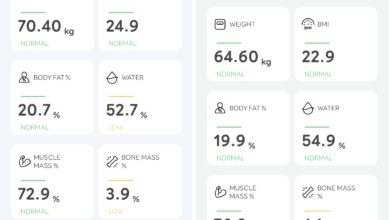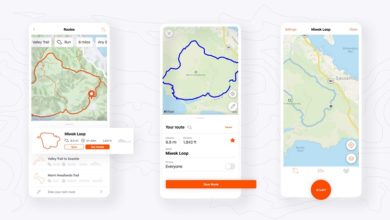DevOps success stories : Atlassian

Atlassian is one of the few companies that made massive inroads in this DevOps era. Founded by Mike Cannon-Brookes and Scott Farquhar back in 2002, Atlassian products are used by almost every software development teams and IT teams across the globe. Most popular products are Jira, Bitbucket, Confluence. Read on to know how they reached the summit.

Back in 2002, Mike and Scott started Atlassian using $10,000 credit card debt. Atlassian, inspired by the Greek Titan, is registered as a business name.The same year, Atlassian released Jira, their best product to date. Jira is a project management tool that is extremely simple to use and is a web only product. Like Jira all Atlassian products are web-only applications. Scroll down to see full timeline of Atlassian.
5 Reasons for rise of Atlassian
Available for everyone, not just for big spenders
In early 2010s, I was working as ‘Software Configuration Manager’, handling tools like IBM Rational Clearcase, IBM Rational Team Concert, Subversion etc. There was very little to no use of open source tools in this space. Git was in testing and exploration stage in many software companies. IBM was like undisputed leader in SCM (Clearcase for version controlled code repositories, Team Concert for project management, Microsoft SharePoint for documentation. All these are licensed proprietary tools that burned lot of pockets. Small companies could not afford these tools and so they were looking for alternative. After two recessions in 21st century, even large companies wanted to cut down on software development costs and they started searching for tools that come with flexibility and affordable pricing.
Pricing and ease of setup

When I first tried Atlassian tools, I purchased 10 user 1 month license of Jira for just 10$ and took similar Bitubucket license for 10$. Imagine that! An extremely low cost alternative to traditional SCM tools. To get started, all you needed was a credit card and a server to host. You can either opt for monthly pricing or annual pricing. Swipe, download software, setup on your server. It was that simple! Even things like setting up projects etc was simple and it does not require rocket science to administer these tools.
Marketplace

Atlassian took a page out of Firefox/Google book and enabled development of extensions/plugins for their applications. For example, in Jira, if you wanted Gantt charts or Agile Portfolio, there are truckload of 3rd party plugins that you can either download for free or pay certain amount. These plugins would seamlessly integrate into Atlassian tools and take application functionality to next level. This truly was the turning point.
Let me give you one scenario. Git came with powerful post action triggers that can do things like ‘block deletion of software code in particular branch of repository’, ‘notify a group of developers when a software code is changed’. In Bitbucket, to enable powerful triggers, we got a plugin named ‘Adaptivist Scriptrunner’. The integration opened up many possibilities for automation. You can read more about Scriptrunner here.
Take any Atlassian product, you will find many many plugins that extend functionality.
Integration between Atlassian products
Any who used IBM or Oracle or SAP products would know how much of a headache it is to intergrate various products that they make. With Atlassian, integration is extremely easy. All you need to do is add your product link in other product’s settings.
Here is an example of integrating Jira and Confluence. Once you have Confluence link added to Jira’s integration settings page, a mere mention of Jira’s Issue Key is enough to show issue detail in Confluence. Confluence understands that the ID is of Jira’s key and gives you option to show detail or minimal information on Jira Issue Key. You can also use Jira’s JQL (Jira Query Language) to show a list of Jira Issues in Confluence. When you add a jira issue key to confluence page, a link appears in Jiras that shows the Confluence document where Jira Key is mentioned.
Popularity of Git

The world has pretty much moved on from IBM Rational Clearcase and Subversion. Back in early 2000s, BitKeeper was used as a source control management system for Linux kernel code. When Larry McVoy (copyright holder of BitKeeper) decided to withdraw free use of BitKeeper, Linus Torvalds headed development of Git. Started on 3 April 2005, first version of Git was ready and was used to version control Linux code by June of 2005. Since then, Junio Hamano maintains Git project.
As of today, Git is at 2.21 version and is the most popular version control tool used by software developers and companies across the globe. In a survey done in 2015 by Eclipse Foundation, 42.9% of professional software developers reported that they are using Git as primary version control tool.
Atlassian predicted this shift towards Git early and boarded Git bandwagon and created set of tools that integrate very well with Bitbucket Server (Git). Developers store all their code in Bitbucket and each change is saved so that they can go back to past changes if current change causes bugs. Each change can be tagged with a Jira ID that contains details like release version, urgency of change, who the requestor is, detailed description of change, what sprint the change is part of etc. Then, Confluence is used for documenting the change. The ‘almost’ perfect toolset for development.
Atlassian Timeline/History
2004 : Atlassian Confluence is released. Confluence is a collaboration platform, mainly used for documentation and has strong integration with Jira.
2005: Atlassian signs their 1,000th customer. Back in 2005, companies followed waterfall model and used more tradition tools from companies like IBM and Remedy for development and operations. The growth, as a result, was limited back then.
2008-2009: Major acquisitions done this year. Atlassian acquire Bamboo, Fisheye, Crucible, Clover and Crowd tools to provide much wider array of tools to development teams. Also, the same year, “Atlas Camp” annual developer conference was started. Amsterdam gets first European office for Atlassian.
2010: Atlassian acquired Bitbucket code hosting service. This was the turning point for Atlassian. Git has been getting widespread love and popularity since early 2010s and with Bitbucket, Atlassian finally got the perfect toolset for developers. Bitbucket for code hosting, Jira for project management and Confluence for documentation. The same year, Atlassian gets massive $60 million funding from Accel Partners. This was Accel’s largest single investment in software company.
2011-2014: Atlassian Cloud and Jira Service Desk released. Atlassian crosses $100 million in revenue. It is commendable, given that Atlassian never had a sales team. In 2014, Atlassian has reported $215 million revenue, nearly doubling revenue from 2013. By end of 2014, Atlassian had offices in six countries. In 2012, Atlassian Marketplace was introduced. Marketplace is one of the key products that redefined how companies distributed software development tools. In 2012, Atlassian also released Stash, a git hosting server that was later renamed to Bitbucket Server. The same year, Atlassian acquired HipChat group chat service.
2015-2019 : Atlassian gets listed on NASDAQ in the year 2015 and has been growing exponentially. Trello, Roo! are acquired in 2017. Accel Partners raise another $60 million in venture capital. When they went public, the IPO had put market capitalization of Atlassian at $4.37 billion. In just over 13 years, Atlassian turned 10,000$ credit card debt into multi billion dollar organization, with millions of end users.





